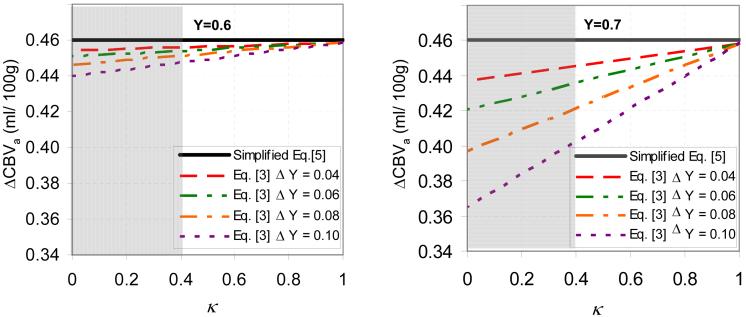Fig. 5.
Simulations show that potential ΔCBVa quantification errors from our MT-varied BOLD data are small using simplified Eq. [5] vs. Eq. [3] with Δνν = 0%. Eq. [3] accounts for non-negligible venous blood contributions in the absence of free exchange between capillary and tissue water; simulations are for baseline venous blood oxygenation levels (Y) of 0.6 (a) and 0.7 (b), as a function of stimulus-induced venous oxygenation changes (ΔY) and ratio of venous MTR to tissue MTR (κ). See text for parameters. Horizontal lines in (a) and (b) represent the ΔCBVa value of 0.46 ml/100 g obtained with Eq. [5], which ignores the venous (third) term of Eq. [3]. A reasonable lower limit for κ is 0.4, based on measurements of a stationary blood phantom (9,10), and the fact of that significant exchange between blood and tissue during the MT spin-preparation period should increase κ; regions that are not gray therefore indicate likely in vivo κ values. It should be noted that Eq. [5] is valid under the conditions of free exchange (κ = 1), even with a non-negligible venous blood term in Eq. [3].

